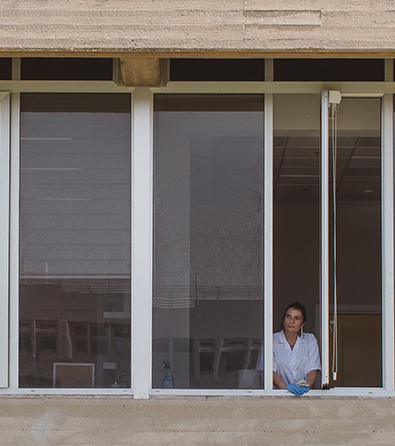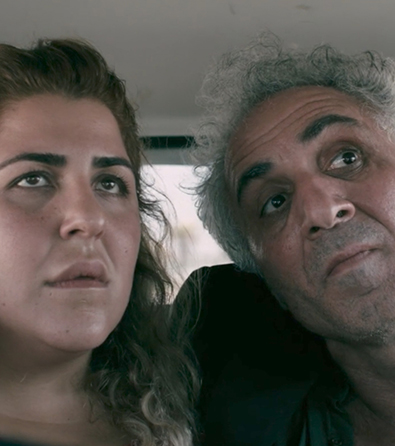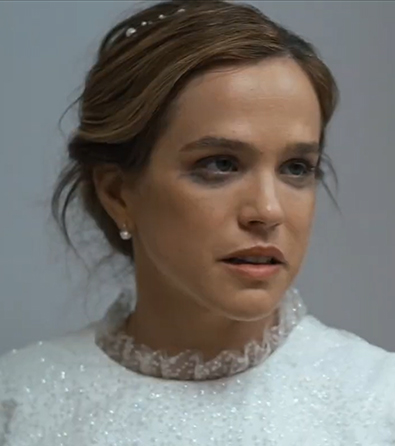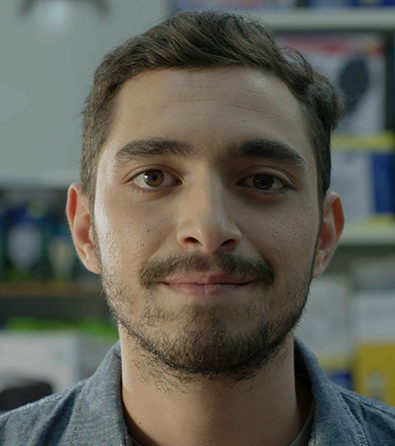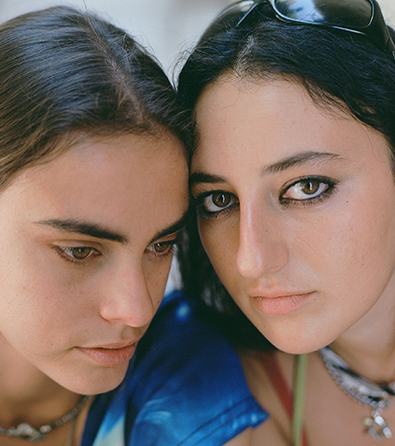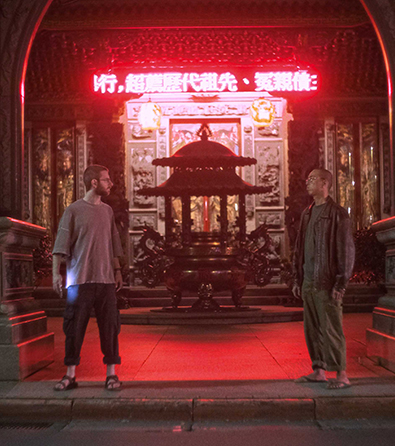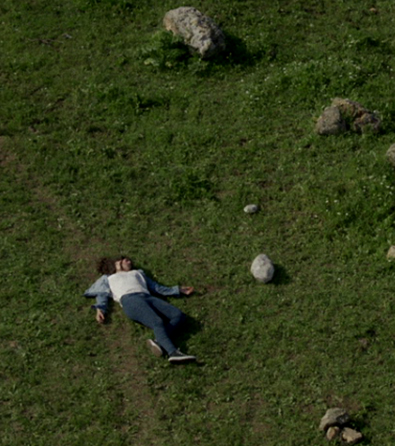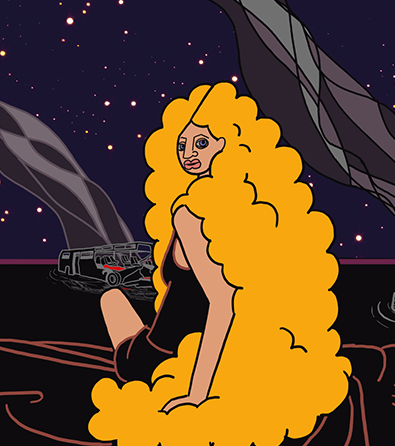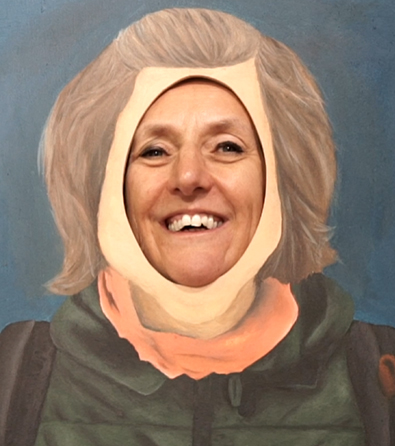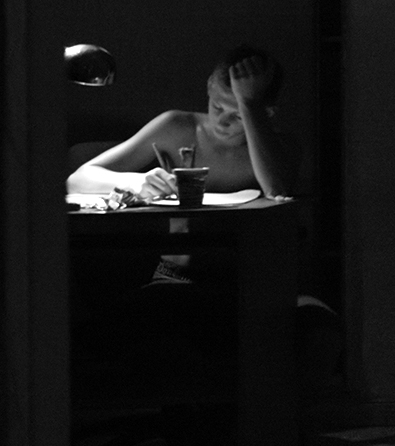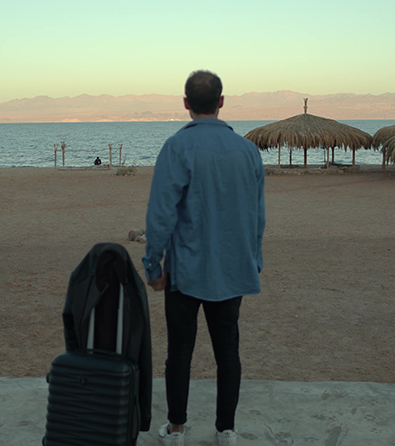The documentary Zelda, A Simple Woman (54 minutes) is available at the top of the page.
* To watch this film, please approve YouTube/Vimeo cookies via the blue cookie icon at the bottom left of the screen
Zelda (Sheina Zelda Schneersohn-Mishkovsky) was an Israeli poet born in 1914 in Chernihiv, then part of the Russian Empire. In 1925, her family immigrated to British Mandate Palestine and settled in Jerusalem. For decades, she wrote privately, keeping her poetry unpublished until, at the age of 53, she released her first poetry collection, “P’nai” (“Leisure”). Her distinct poetic voice soon gained widespread recognition, earning her some of Israel’s most prestigious literary honors, including the Bialik Prize and the Prime Minister’s Prize for Hebrew Writers.
Her life and literary legacy are the focus of the documentary Zelda, A Simple Woman, directed by Yair Qedar as part of The Hebrews, a groundbreaking anthology dedicated to celebrating the iconic figures of Hebrew literature. This documentary film series explores the lives and works of canonical Hebrew poets and writers, creating a vital bridge between contemporary audiences and the rich heritage of Hebrew poetry and literature.
The documentary Zelda, A Simple Woman offers a rare glimpse into the private world of the poet Zelda—a deeply religious, introspective, and unique figure in Israeli culture. Through an intimate exploration of her life and creative work, the film traces the defining moments that shaped her journey, examines the people who were part of her world, and gives voice to those who knew her closely. Though Zelda lived with humility and solitude, she also cultivated meaningful relationships with Israeli writers and intellectuals, including secular figures, opening her inner world to them.
Zelda was also a dedicated teacher in Jerusalem, where one of her students was the author Amos Oz. In his book “A Tale of Love and Darkness”, he described her distinctive presence and teaching style. Oz also participated in Zelda, A Simple Woman, where he read from his book and shared his reflections on the poet-teacher who left a lasting impact on her students:
“The teacher Zelda spoke so quietly, and if we wanted to hear, it wasn’t enough to be quiet; we had to lean forward over our desks. Everything the teacher Zelda said was intriguing and somewhat unexpected, as if she were teaching us a new language. Zelda called any kind of teasing ‘poison.’ She called lying ‘falling’ or ‘breaking.’ She called pride ‘scorched wings,’ and to give up something, even just an eraser or a turn handing out drawing paper to the class, she called ‘a spark.'”
Qedar’s choice of the title Zelda, A Simple Woman encapsulates the enigma of her character. Taken from her poem “Strange to Be a Simple Woman,” it hints at the depth hidden beneath her quiet presence. Zelda was far from simple—she was a profoundly spiritual and complex figure whose poetry transcended the boundaries of the religious world in which she lived. Against all odds, her work became an essential part of Israeli culture.
“It’s strange to be a simple, homey, dainty woman in a bold generation, a violent generation. To be shy, exhausted in an unfeeling generation.”
The film explores the hidden dimensions of Zelda’s character; rather than attempting to decipher her directly, it invites viewers to piece together an image of her through the testimonies of those who knew her intimately—women who stayed at her home, writers and intellectuals who engaged with her, and scholars who have studied her work. In a conversation I had with Yair Qedar, he shared that he approached the film through Zelda’s childhood story and early writings, seeking to depict her journey as a poet. “I realized that this film was going to be about an anti-heroine,” he explained. “I chose a meditative narrative structure, which also influenced the film’s aesthetic.” The delicate animation, under the artistic direction of Yaron Shin (Jewboy), was created as a sensitive interpretation of Zelda’s poetry and her unique personality.
The film also features footage from David Perlov’s “In Jerusalem” (1963), which, according to Qedar, allowed him to move beyond the constraints of black-and-white filmmaking and outdated cultural representations, offering a rare glimpse of Zelda in color. Additionally, he incorporated Zelda’s letters into the film; these letters were released for publication around the time of its production and later compiled in the book “A Bird Enchanted by Magic.” “This treasure allowed us to get closer to her complex character and revealed how seamlessly her poetry was interwoven with her life. These letters also carry a poetic quality,” he recalls.
The film also delves into one of Zelda’s most well-known poems, “Each of Us Has a Name,” which has become a fundamental part of Israeli culture. It is recited at official ceremonies, memorial days, and the Holocaust remembrance event that bears its name. A year after its publication, Hanan Yovel composed a musical arrangement for the poem, and Chava Alberstein first performed it on her album “Like a Wild Flower” (1975). Alberstein appears in the film, recounting her deeply moving meeting with Zelda.
Each of Us Has a Name | Zelda
Each of us has a name
Given by God
And given by our parents.
Each of us has a name
Given by our stature
And our smile
And given by what we wear.
Each of us has a name
Given by the mountains
And given by our walls.
Each of us has a name
Given by the stars
And given by our neighbors.
Each of us has a name
Given by the sea
And given by our death.
Zelda published several poetry collections, including “Leisure,” “The Invisible Carmel,” “Be Not Far,” and “It Is Surely a Mountain, It Is Surely a Fire,” which earned her the Bialik Prize for Literature in 1978. Other notable works include “The Spectacular Difference” and “That Became Separated from Every Distance,” both published by Hakibbutz Hameuchad.
The Hebrews anthology was conceived as a dynamic and evolving literary canon, showcasing a diverse range of voices within Israeli culture, including writers and poets who have been historically marginalized—women, Mizrahim, and others. Yair Qedar explains that the selection process is shaped by multiple factors and is continually updated and refined. A new season is released every three to four years, with the next installment often already in production as the latest films enter their screening cycle.
As of February 2025, The Hebrews anthology includes 19 documentary films on prominent figures such as Lea Goldberg, Yona Wallach, Hayim Nahman Bialik, Yosef Haim Brenner, Zelda, Rabbi David Buzaglo, Rachel Bluwstein Sela, Ze’ev Jabotinsky, Avot Yeshurun, Abraham Sutzkever, Miriam Yalan-Shteklis, Shalom Shabazi, David Vogel, Jacqueline Kahanoff, Amos Oz, A.B. Yehoshua, and Sigmund Freud. The project features contributions from various directors, including Yair Qedar, Sivan Arbel, Raphael Balulu, Ayelet Ofarim, Uri Barbash, Amichai Hasson, Israela Shaer Moeded, Reuven Brodsky, David Ofek, and Benjamin Freidenberg, with Qedar serving as a consultant and producer for all projects. The series has won more than 30 awards in Israel and abroad. In 2019, marking a decade since the inception of The Hebrews, special retrospectives were held at the Docaviv Festival, the Van Leer Jerusalem Institute, and various museums and universities worldwide.
The Hebrews films have had a significant impact, partly due to their extensive online reach, accumulating millions of views. “The series serves as a gateway to Hebrew literature, preserving, distributing, and giving it a contemporary presence,” said Yair Qedar. “It was a miracle that the first films resonated so strongly with audiences, enabling me to continue producing more films in the series.”
When I asked Qedar whether the anthology would expand, he replied, “As long as public broadcasting exists in Israel and I can secure the necessary funding, I would love for the series to continue.” However, he acknowledges that securing funding has become increasingly challenging, as interest in classical Israeli culture, even among Jewish audiences worldwide, is waning. On the other hand, when it comes to recruiting directors and creative partners, enthusiasm remains high, as working with Qedar offers them extensive artistic freedom. “Take the helm and be as creative as possible with as few external constraints as you can,” he tells them.
The Hebrews serves as fertile ground for the creation of documentary films in diverse styles, weaving together biographical narratives, original music, design, and animation. These films transform literary works into cinematic language, presenting a range of creative interpretations by a select group of artists and filmmakers. The result is a rare and compelling fusion of poetry, literature, and documentary cinema, offering artistic tributes to the rich heritage of Hebrew writing.
To watch all the documentary films in The Hebrews anthology, click here.
